Classics of Western Spirituality: Judaism, Islam, and Native American Religions (28 vols.)
Digital Logos Edition
Overview
Recognizing the rich theological and spiritual tradition of global religions, the Judaism, Islam, and Native American Religions collection presents select classic works of spirituality from Jewish, Sufi, Muslim, and Native American authors. This collection includes poems, songs, letters, mystical narratives, moral treatises, and philosophical essays.
Looking for more resources from the Classics of Western Spirituality collection? Check out the Classics of Western Spirituality Bundle (126 vols.).

- Presents a representative collection of writings on Jewish, Sufi, Islamic and Native American Spirituality
- Includes both famous authors and lesser-known writers
- Provides diverse perspectives on human spirituality in multiple genres
- Title: Classics of Western Spirituality: Judaism, Islam, and Native American Religions
- Series: The Classics of Western Spirituality
- Publisher: Paulist Press
- Volumes: 28
- Pages: 10,056
Individual Titles
- Abu al-Hasan al-Shushtari: Songs of Love and Devotion translated by Lourdes Maria Alvarez
- Early Islamic Mysticism: Sufi Qur’an, Mi’raj, Poetic and Theological Writings edited by Michael A. Sells
- Fakhruddin Iraqi: Divine Flashes translated by William C. Chittick and Peter L. Wilson
- Farid ad-Din Attar’s Memorial of God’s Friends: Lives and Sayings of Sufis translated by Paul Edward Losensky
- Ibn ‘Abbad of Ronda: Letters on the Sufi Path translated by John Renard
- Ibn Al’Arabi: The Bezels of Wisdom translated by R. W. J. Austin
- Ibn ‘Ata’ Illah Iskandari/Kwaja Abdullah Ansari: The Book of Wisdom/Intimate Conversations translated by Victor Danner and Wheeler M. Thackston
- Knowledge of God in Classical Sufism: Foundations of Islamic Mystical Theology translated by John Renard
- Nizam Ad-Din Awliya: Morals for the Heart translated by Bruce B. Lawrence
- Sharafuddin Maneri: The Hundred Letters translated by Paul Jackson
- Umar Ibn al-Farid: Sufi Verse, Saintly Life translated by Thomas Emil Homerin
- Rabbinic Stories translated by Jeffery L. Rubenstein
- The Classic Midrash: Tannaitic Commentaries on the Bible by Reuven Hammer
- The Talmud: Selected Writings translated by Ben Zion Bokser
- The Early Kabbalah edited by Joseph Dan
- Zohar: The Book of Enlightenment translated by Daniel Chanan Matt
- Abraham Isaac Kook: The Lights of Penitence, the Moral Principles, Lights of Holiness, Essays, Letters, and Poems translated by Ben Zion Bokser
- Abraham Miguel Cardozo: Selected Writings translated by David J. Halperin
- Elijah Benamozegh: Israel and Humanity edited by Maxwell Luria
- Hasidic Spirituality of a New Era: The Religious Writings of Hillet Zeitlin edited by Arthur Green
- Isaiah Horowitz: The Generations of Adam edited by Miles Krassen
- Jewish Mystical Autobiographies: The Book of Visions and the Book of Secrets translated by Morris M. Faierstein
- Menahem Nahum of Chemobyl: Upright Practices, the Light of the Eyes translated by Arthur Green
- Nahman of Bratslav: The Tales translated by Arnold Band
- Philo of Alexandria: The Contemplative Life, The Giants, and Selections by Philo of Alexandria
- Safed Spirituality: Rules of Mystical Piety, The Beginning of Wisdom translated by Lawrence Fine
- Native Meso-American Spirituality: Ancient Myths, Discourses, Stories, Doctrines, Hymns, Poems from the Aztec, Yucatec, Quiche-Maya and Other Sacred Traditions edited by Miguel Leon-Portilla
- Native North American Spirtuality of the Eastern Woodlands: Sacred Myths, Dreams, Visions, Speeches, Healing Formulas, Rituals and Ceremonials edited by Elizabeth Tooker
This title is included in the following collections
You can save when you purchase this product as part of a collection.
Classics of Western Spirituali...
$2,150.74$1,289.992025 Verbum Portfolio Library
$4,749.99$3,324.99Logos 8 Collector's Edition Le...
$11,399.99$11,399.99Logos 7 Collector's Edition Le...
$11,399.99$11,399.99
- $11,399.99
- $23,999.99$17,999.99
- $21,749.99
- $24,999.99

Sensuous, spiritual, and ethereal, this selection of works by the prominent Andalusian Sufi mystic and poet Abu al-Hasan al-Shushtari (1212–1269) will delight everyone, whether or not they are devotees of Islamic literature.

This volume makes available and accessible the writings of the crucial early period of Islamic mysticism during which Sufism developed as one of the world’s major mystical traditions. The texts are accompanied by commentary on their historical, literary and, philosophical context.

One of the foremost expositors of Sufi teachings, Fakhruddin Iraqi (1213–1289) was one of the greatest of Persian poets. His masterpiece, Divine Flashes, is a classic expression of Sufi love mysticism.
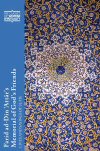
This volume presents the lives and sayings of some of the most renowned figures in the Islamic Sufi tradition, translated into a contemporary American English from the Persian of the poet Farid ad-Din Attar.
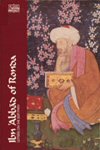
Ibn ‘Abbad of Ronda (1332–1390) wrote to his friends in Fez from the small Moroccan town of Salé. This volume contains selections of his letters, dating from 1365 to 1375, blending the lay movement of his time and the Sufi traditions of his past into a fresh spirituality.
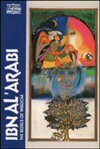
Called by Moslems “the greatest Master,” Ibn Al’ Arabi (1165–1240), a Sufi born in Spain, wrote this work that was intended to be a synthesis of his spiritual doctrine.

Ibn ‘Ata’ Illah Iskandari/Kwaja Abdullah Ansari: The Book of Wisdom/Intimate Conversations
- Authors: Ibn ‘Ata’ Illah Iskandari and Kwaja Abdullah Ansari
- Translators: Victor Danner and Wheeler M. Thackston
- Series: The Classics of Western Spirituality
- Publisher: Paulist Press
- Publication Date: 1978
- Pages: 256
Two early Sufi classics are contained in this volume. They embody the essence of spiritual life in the Islamic tradition. Ibn ‘Ata’ Illah (c. 1250–1309) was a Sufi saint and sage who lived in Egypt. Kwaja Abdullah Ansari (1006–1089) was one of major early writers of Persian mystical literature.
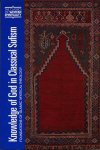
This volume consists of a mini-anthology of translated classical and medieval Arabic and Persian texts on the relationship between traditional, discursive knowledge of Islamic religious tradition and the experiential knowledge of God.
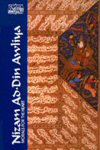
Translated from Persian, Morals for the Heart contains the conversations of Shaykh Nizam ad-din Awliya (d. 1325), a major Indian saint, as recorded by his disciple.
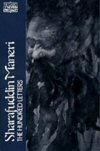
Sharafuddin Maneri (c. 1263–1381), born in India, was one of the most famous Islamic saints and one of the greatest Sufi masters. The Hundred Letters is a basic presentation of his teachings for spiritual advancement.
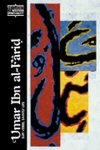
This volume contains two major works of the venerated poet Umar Ibn al-Farid (b. 576 [hijri date]/1181 AD; d. 632 [hijri date]/1235 AD), an accomplished Sufi as well as a respected poet, whose works blend the two traditions of classical Arabic poetry and Islamic mysticism.
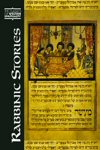
This volume contains stories from the main works of classical rabbinic literature, which were produced by Jewish sages in either Hebrew or Aramaic, between AD 200 and AD 600.
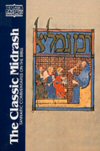
This volume includes commentary and interpretation of Scripture taken from the early rabbinic masters, the Tannaim, along with a running explanation of their theological, literary and historical importance. The editing of the Tannaitic Midrashim took place in the land of Israel in the fourth to fifth centuries AD.
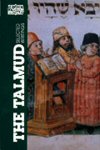
This volume sheds light on the early rabbis as the shapers of religion and uncovers for the modern reader the early Sages’ fundamental beliefs concerning God, the world and the human condition.
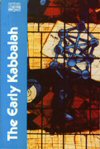
This volume contains previously unavailable texts, including The Book Bahir and the writings of the Iyyum circle that were written during the first 100 years of this movement that was to become the most important current in Jewish mysticism. This movement began in the late twelfth century among Rabbinic Judaism in southern Europe.
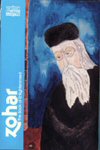
This volume contains the first translation with commentary of selections from The Zohar, the major text of the Kabbalah, the Jewish mystical tradition. This work was written in thirteenth-century Spain by Moses de León, a Spanish scholar.

Abraham Isaac Kook: The Lights of Penitence, the Moral Principles, Lights of Holiness, Essays, Letters, and Poems
- Author: Abraham Isaac Kook
- Translator: Ben Zion Bokser
- Series: The Classics of Western Spirituality
- Publisher: Paulist Press
- Publication Date: 1978
- Pages: 448
The chief Rabbi of Palestine prior to the establishment of the state of Israel, Abraham Isaac Kook (1865–1935) represents the renewal of the Jewish mystical tradition in modern times.
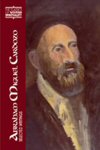
This volume contains the story, mainly told in his own words, of Abraham Miguel Cardozo (1627–1706), a seventeenth-century Jew raised as a Catholic, who combined his rabbinic learning, his Catholic training and a budding awareness of Eastern religions into a remarkable theory of comparative religion.
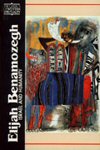
This volume consists of the first English translation of Israel and Humanity, the work that constitutes a synthesis of the religious thought of Elijah Benamozegh (1823–1900), a nineteenth-century Italian rabbi, theologian, philosopher, and kabbalist.
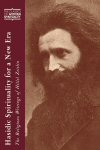
Hasidic Spirituality of a New Era: The Religious Writings of Hillet Zeitlin
- Author: Hillet Zeitlin
- Editor: Arthur Green
- Translator: Arthur Green
- Series: The Classics of Western Spirituality
- Publisher: Paulist Press
- Publication Date: 2012
- Pages: 256
A preeminent scholar of Jewish thought and spirituality presents the first-ever English translation of selected writings of the Hasidic martyr of the Warsaw Ghetto, Hillel Zeitlin (1871–1942).

This volume consists of the first English translation of a seventeenth-century classic of Jewish literature that deals with many of the most important issues addressed by Kabbalists since the late twelfth century. Isaiah Horowitz (c. 1570–1626) served as rabbi of several of the most important European Jewish communities before becoming Chief Ashkenazic Rabbi of Jerusalem in 1621.
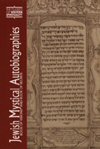
This volume consists of the first English translations of the autobiographical works of two important and influential Jewish mystics. In The Book of Visions, Rabbi Hayyim Vital (1542–1620), foremost disciple of R. Isaac Luria, describes his mystical experiences in great detail. In The Book of Secrets, Rabbi Yizhak Isaac Safrin of Komarno (1806–1874) recounts incidents in his life and visionary experiences.
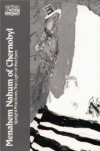
Menahem Nahum of Chernobyl (1730–1797) was rabbi of Chernobyl, near Kiev, in Ukraine. He was part of the Hasidic movement that played a key role in the history of eastern European Jewry. Upright Practices is a devotional manual of personal practices. The Light of the Eyes is a collection of homilies based on the Book of Genesis.
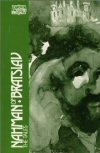
The fascinating sacred tales of Rabbi Nahman (1772–1810) are presented to the world in the most authentic translations ever accomplished.

Available for the first time in one volume is the basic vision of Philo (c. 20 BC–AD 50), the greatest Jewish mystic, philosopher, and theologian of the Greco-Roman period. This anthology allows Philo to speak in his own words, and opens the door to further explore his writings. This volume includes Philo's The Contemplative Life, The Giants, and selections from the other treatises are presented by theme.

This volume portrays aspects of the rich literature that developed in Safed, a Galilean city and one of the great centers of Jewish creativity, in the sixteenth century.
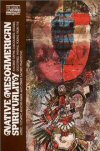
Native Meso-American Spirituality: Ancient Myths, Discourses, Stories, Doctrines, Hymns, Poems from the Aztec, Yucatec, Quiche-Maya and Other Sacred Traditions
- Editor: Miguel Leon-Portilla
- Translators: Miguel Leon-Portilla, J. O. Arthur Anderson, Charles E. Dibble, and Munro S. Edmonson
- Series: The Classics of Western Spirituality
- Publisher: Paulist Press
- Publication Date: 1980
- Pages: 322
This volume contains a collection of pre-Columbian ancient spiritual texts, the majority of which were conceived in the AD 950–1521 period. These sacred writings are attributed to the indigenous peoples of Central America, especially Mexico.
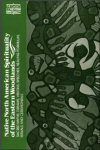
Native North American Spirtuality of the Eastern Woodlands: Sacred Myths, Dreams, Visions, Speeches, Healing Formulas, Rituals and Ceremonials
- Editor: Elizabeth Tooker
- Series: The Classics of Western Spirituality
- Publisher: Paulist Press
- Publication Date: 1979
- Pages: 302
This volume includes a basic collection of the sacred texts, religious beliefs and practices of the Indian tribes that lived along the east coast of the United States and Canada.
Reviews
2 ratings

Paul Whitehorn, Jr.
12/14/2024
Zach Moore
2/4/2019